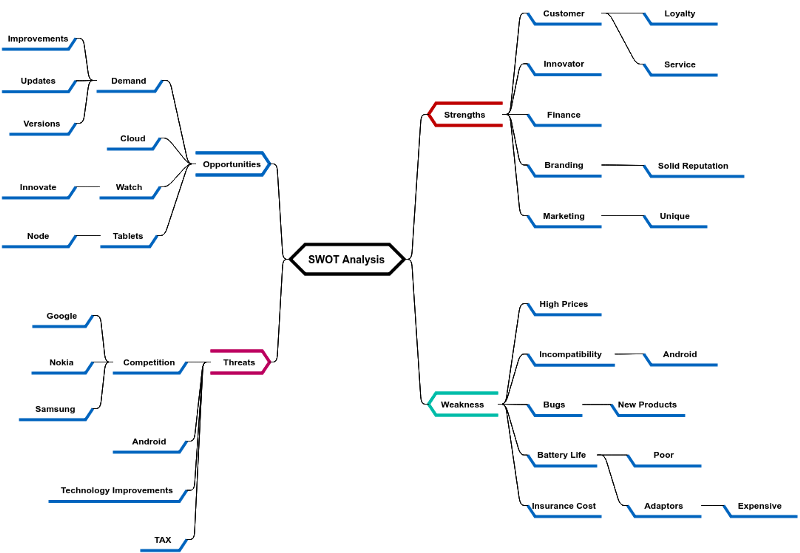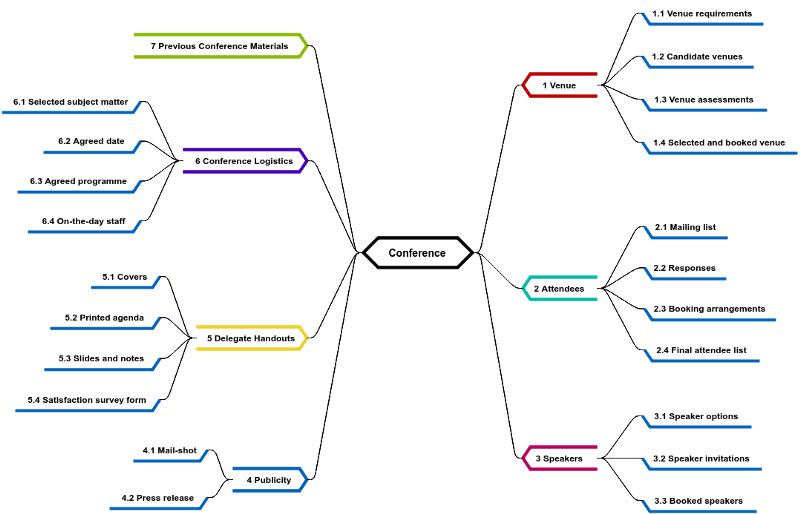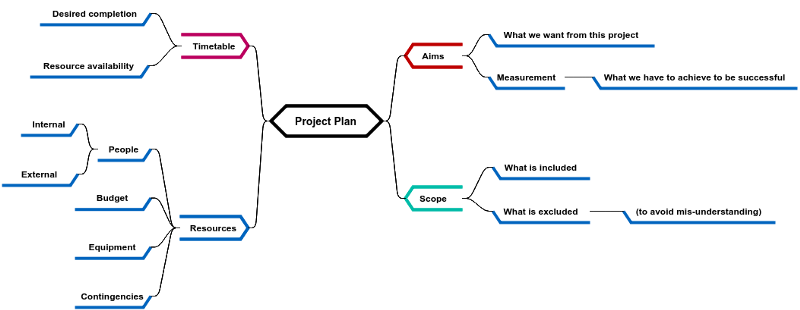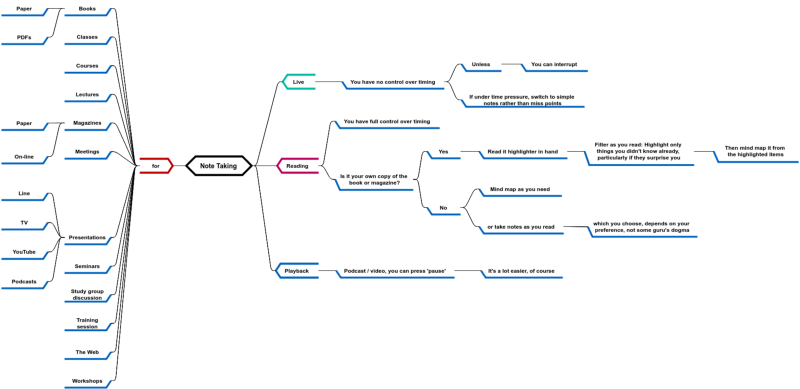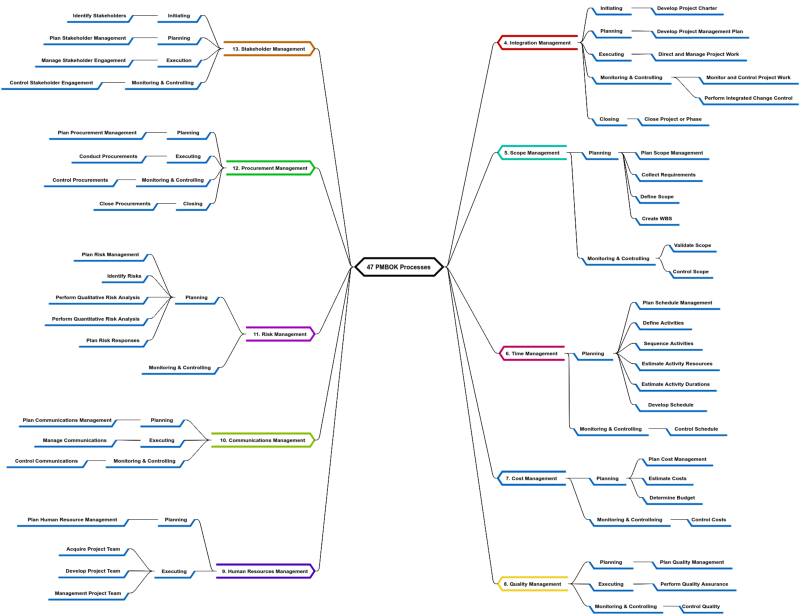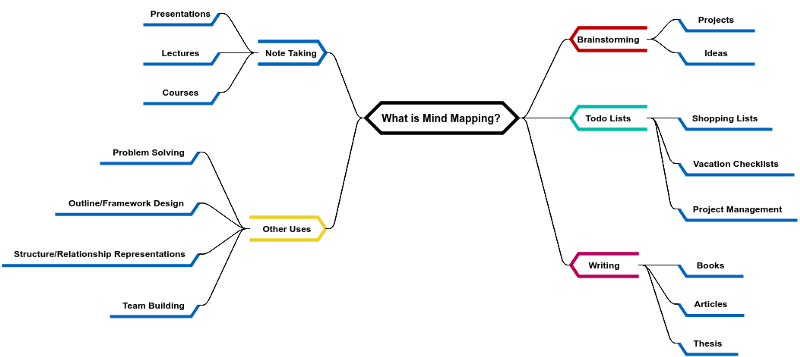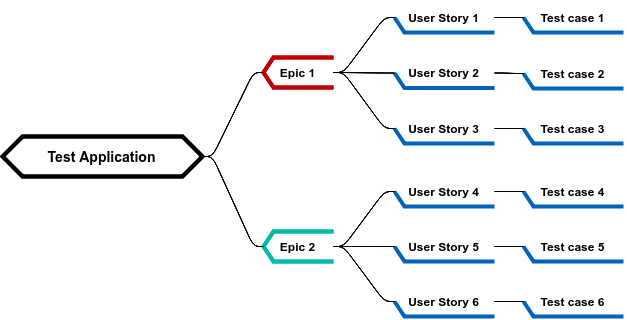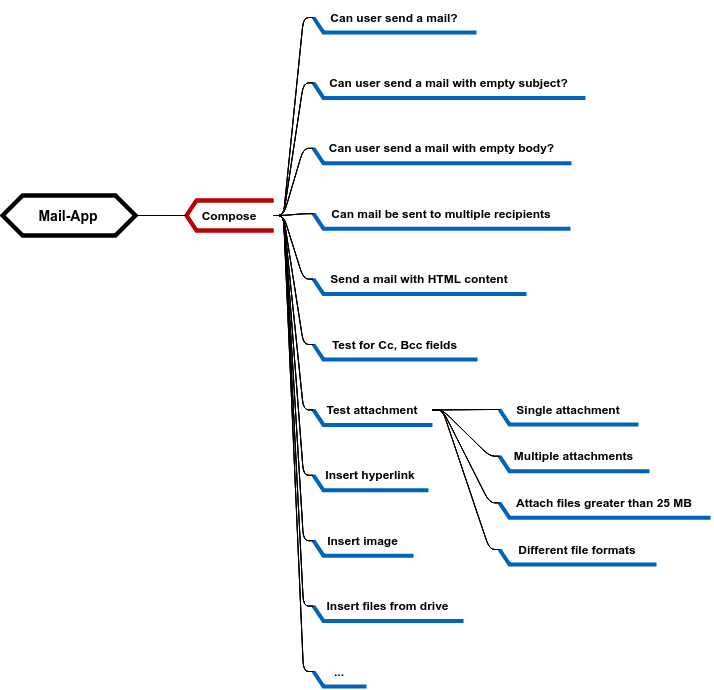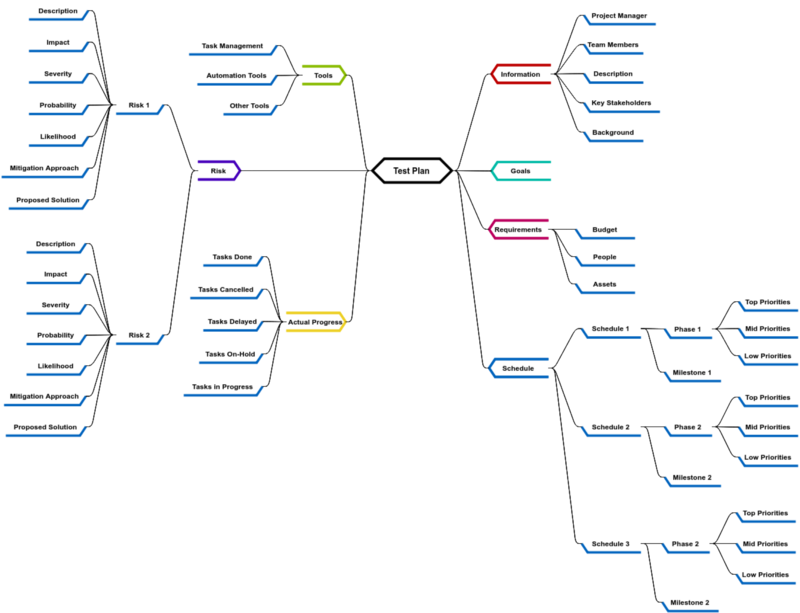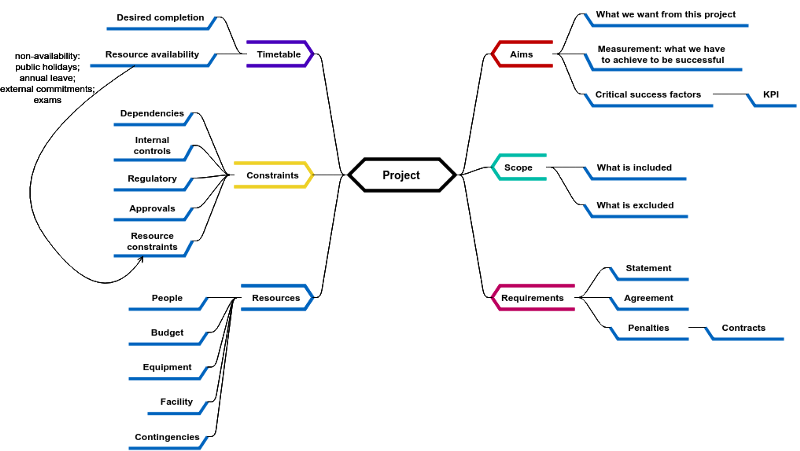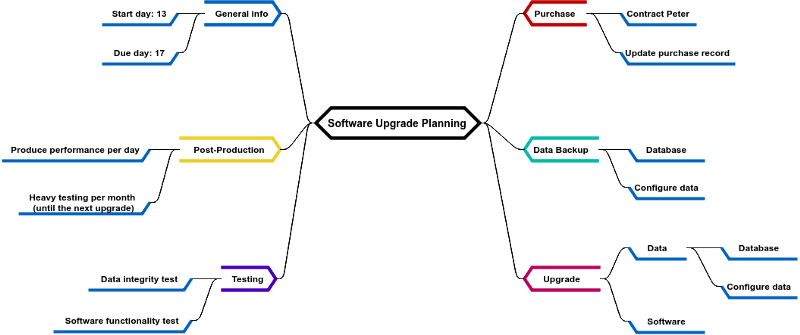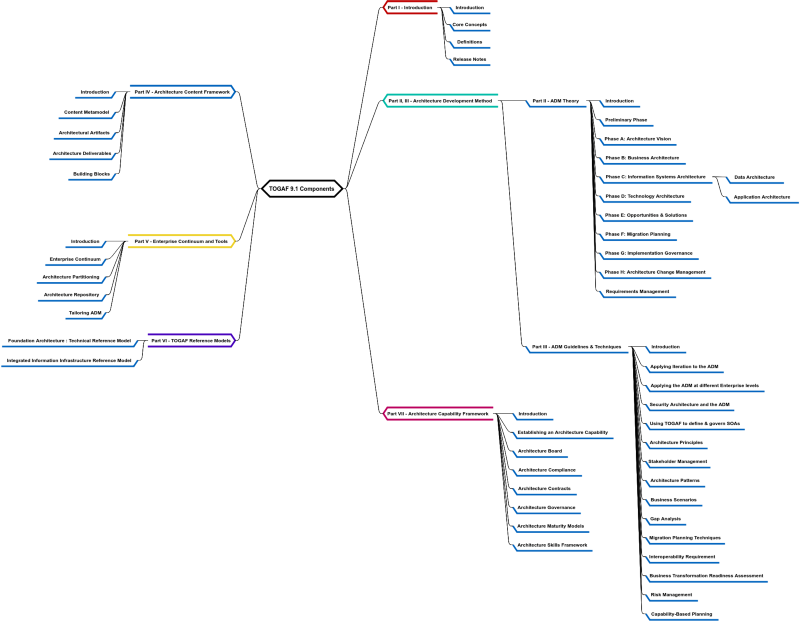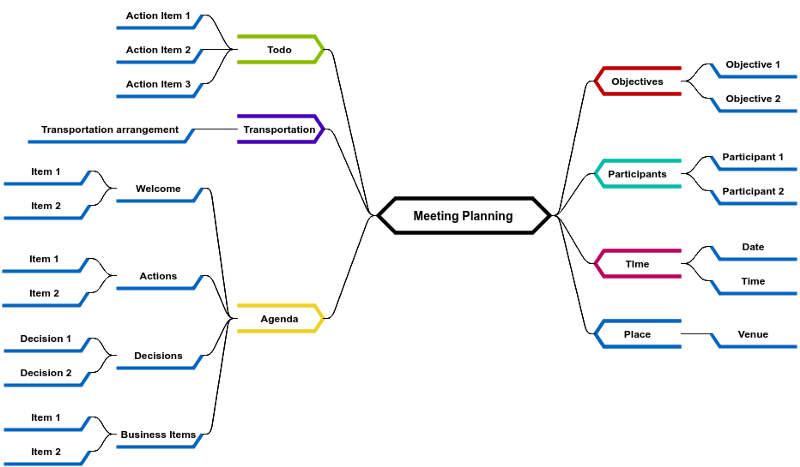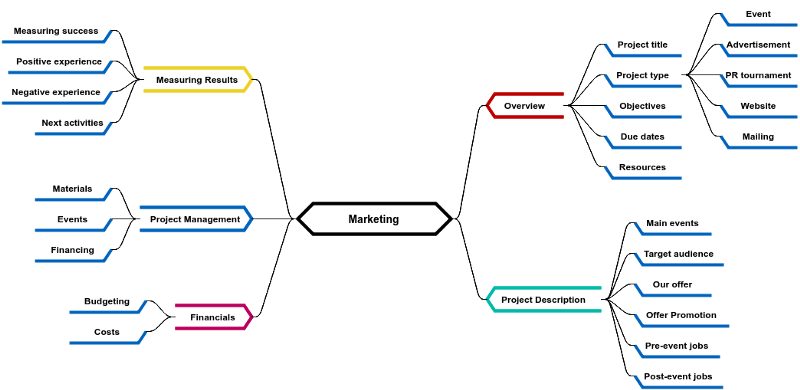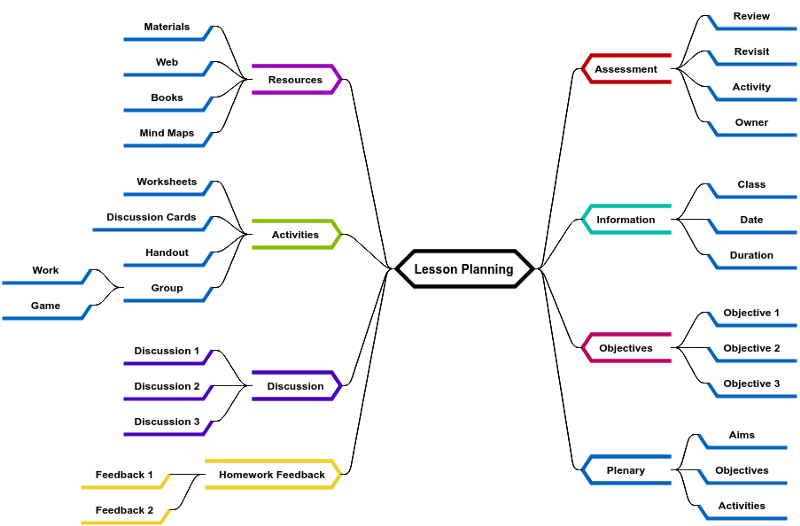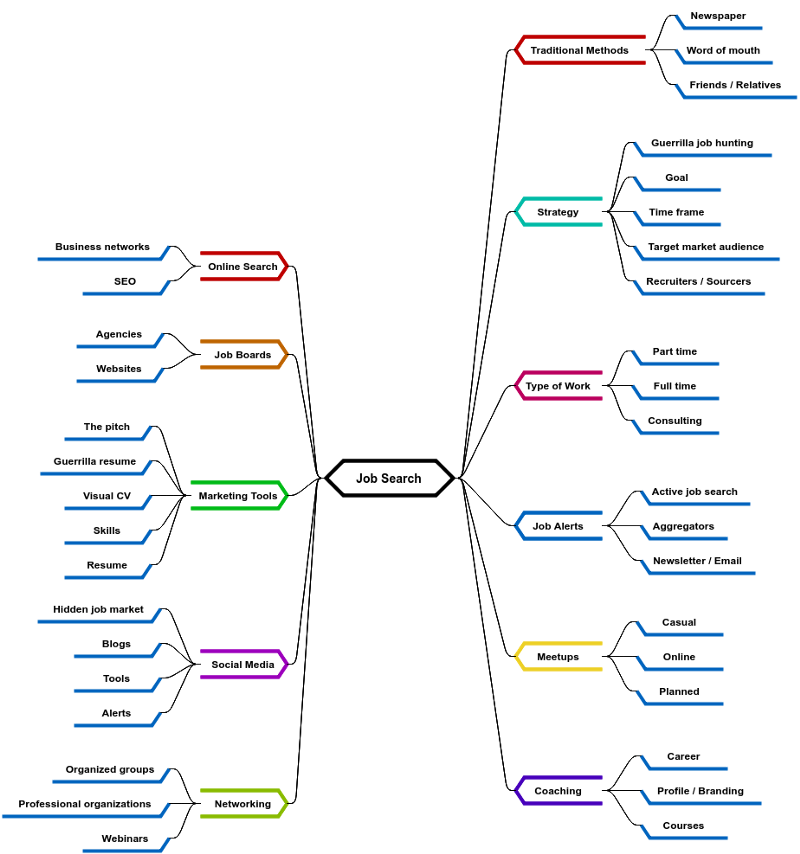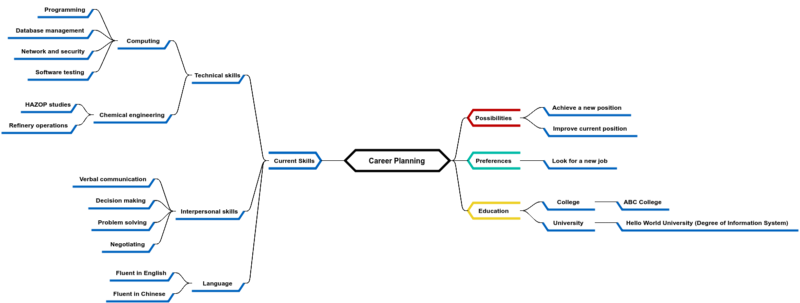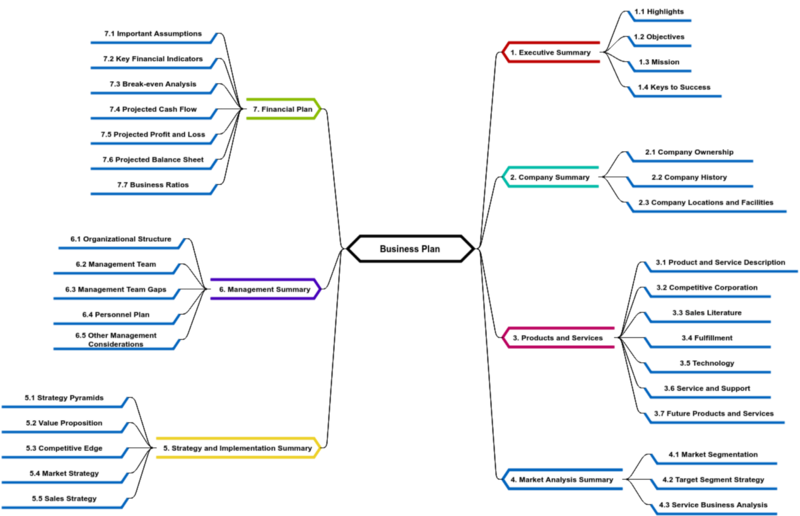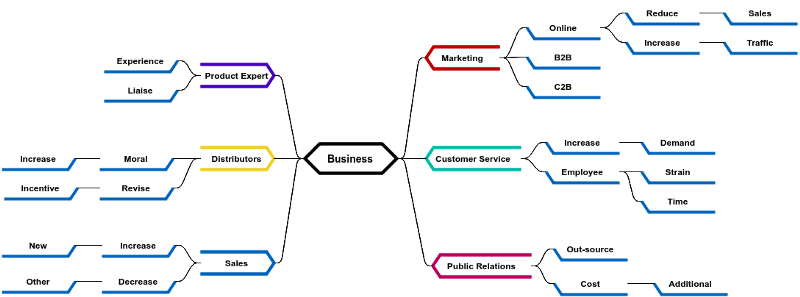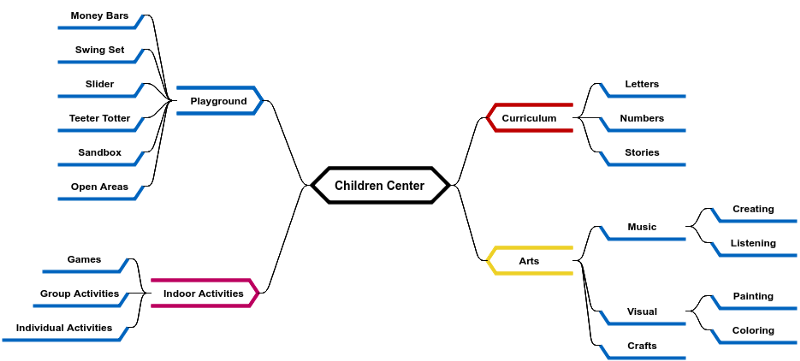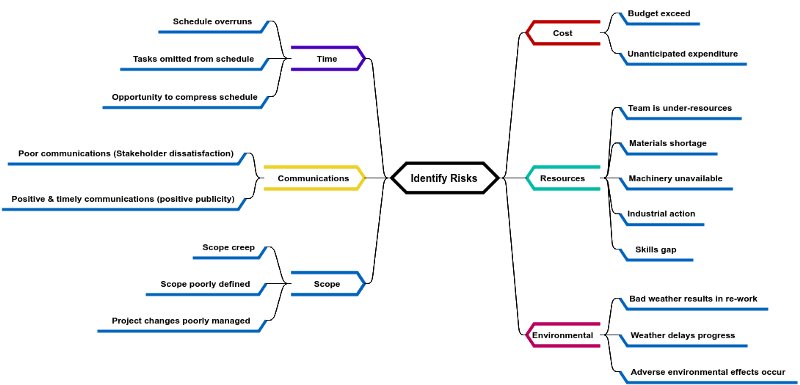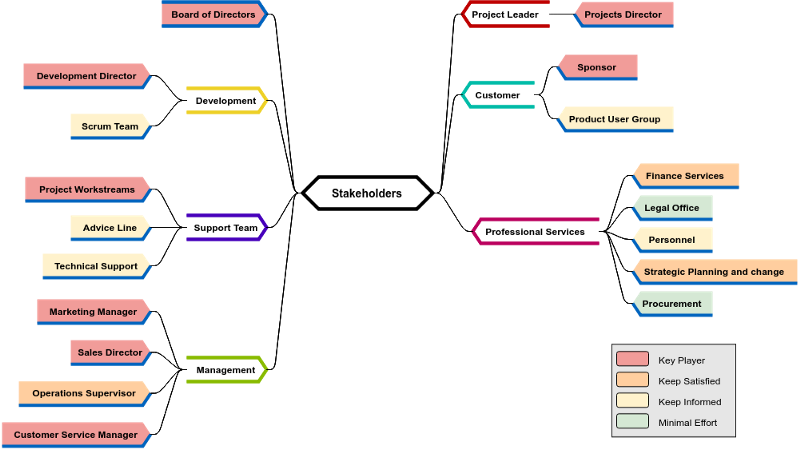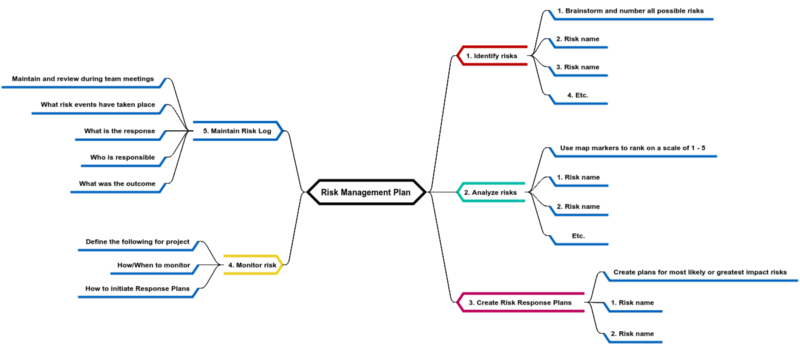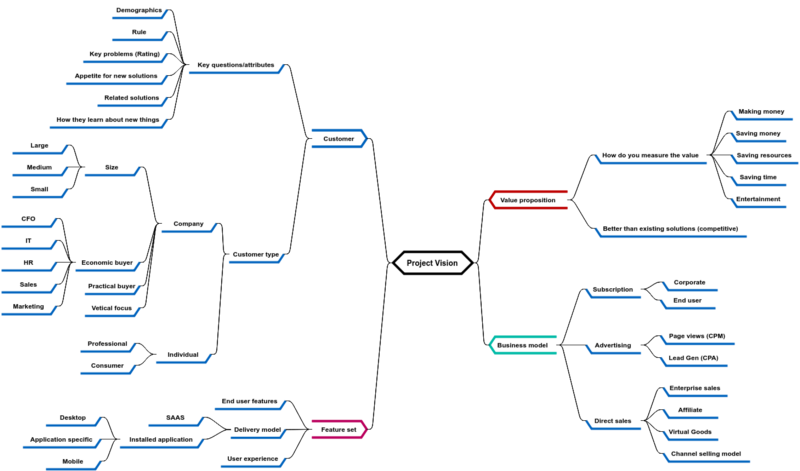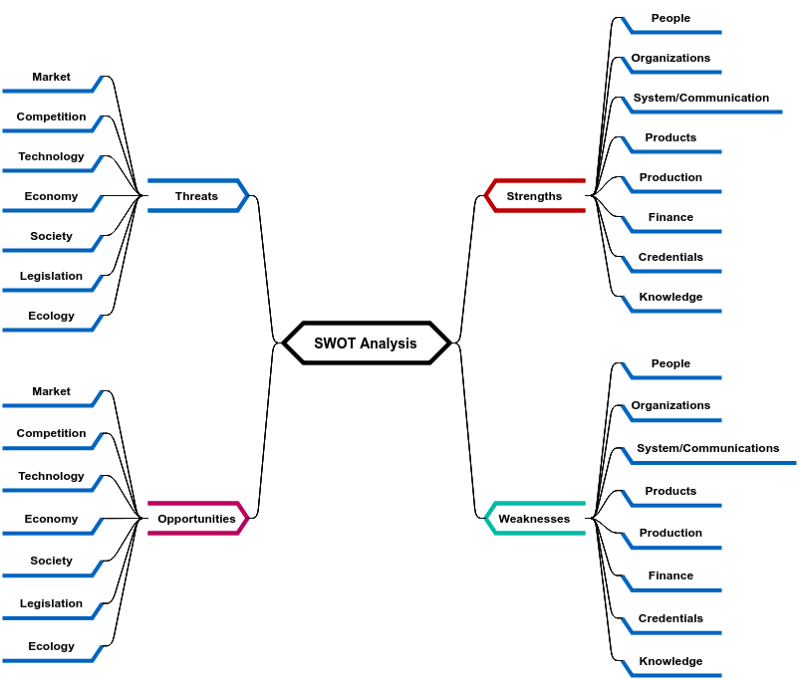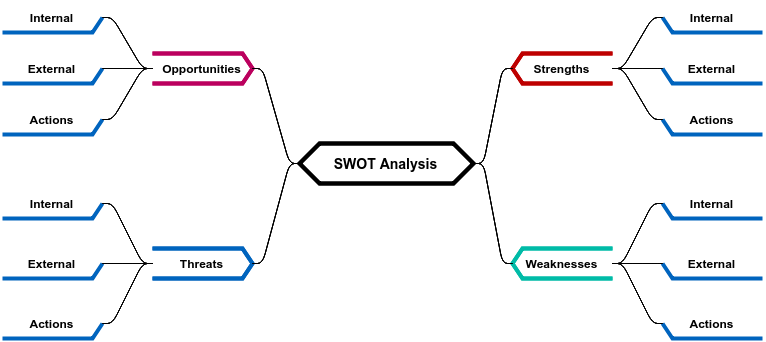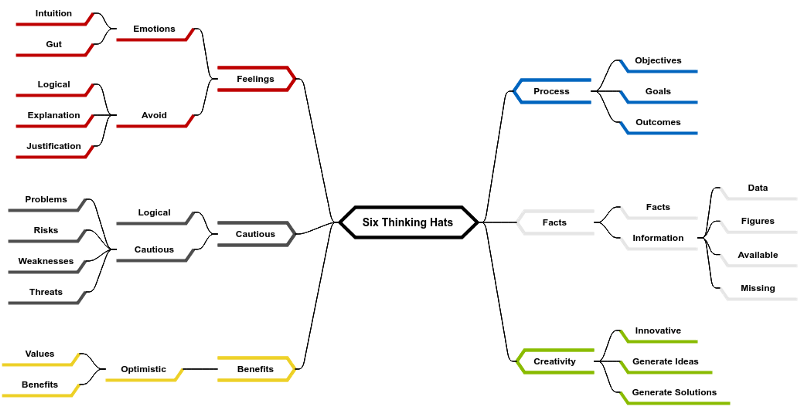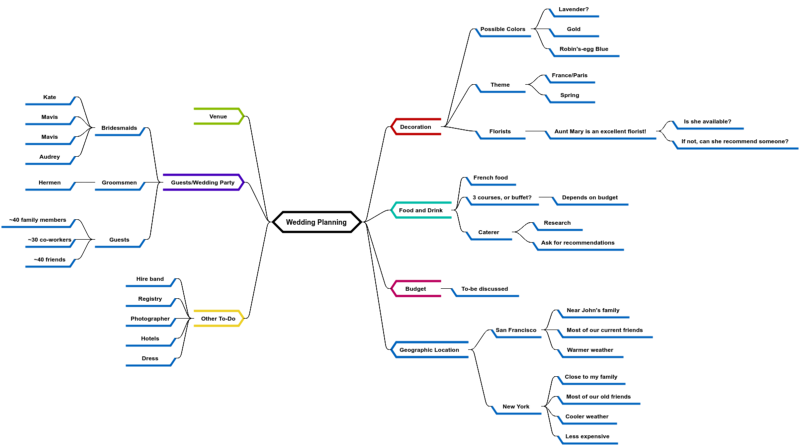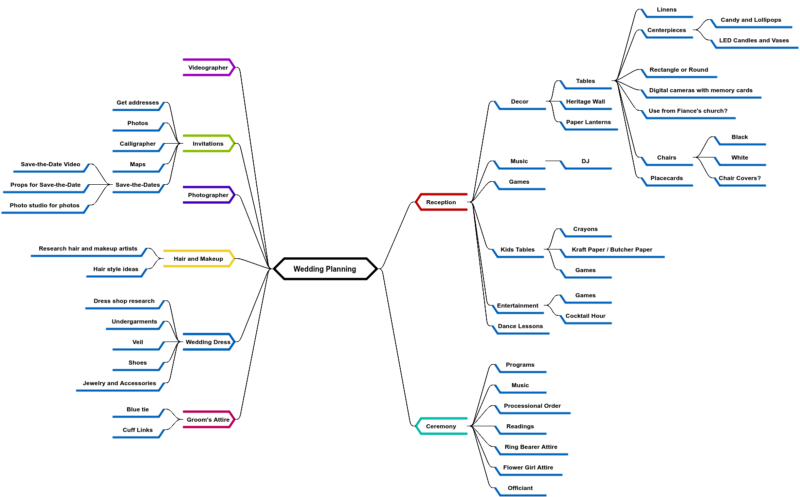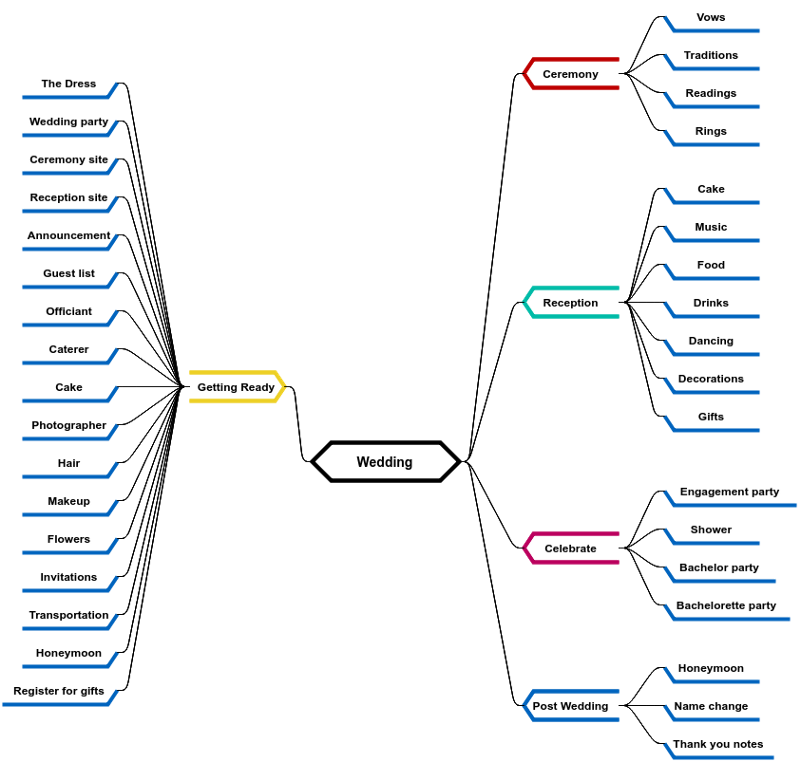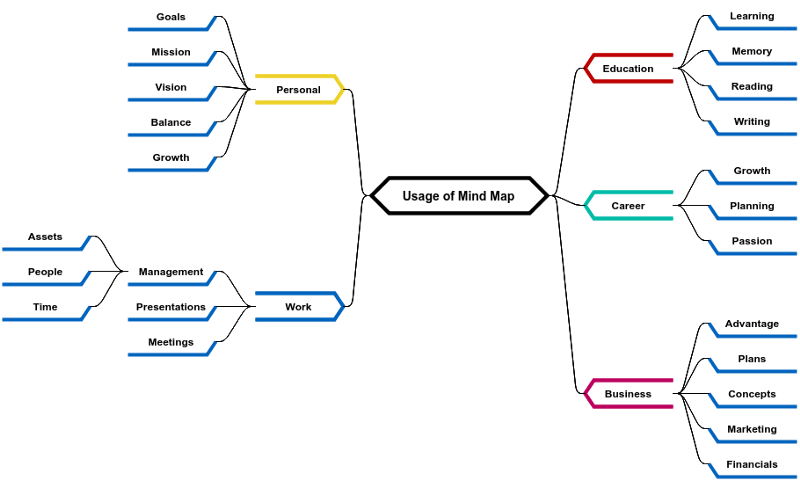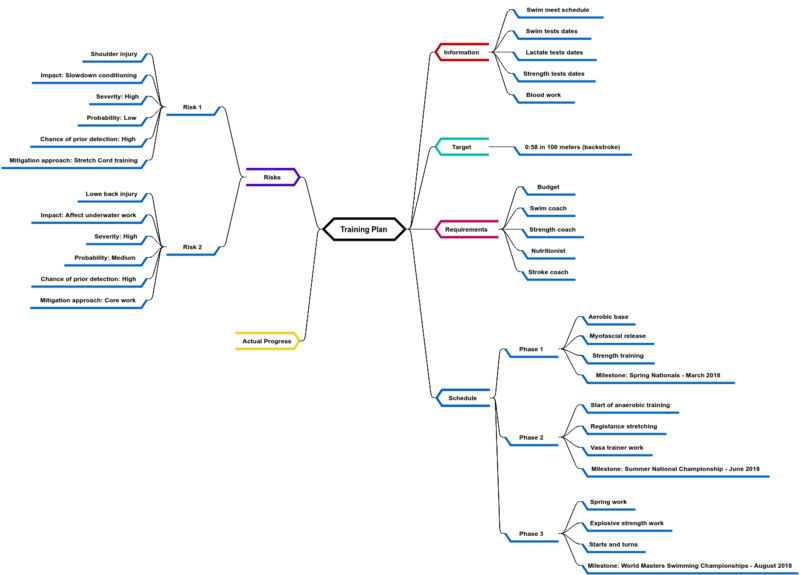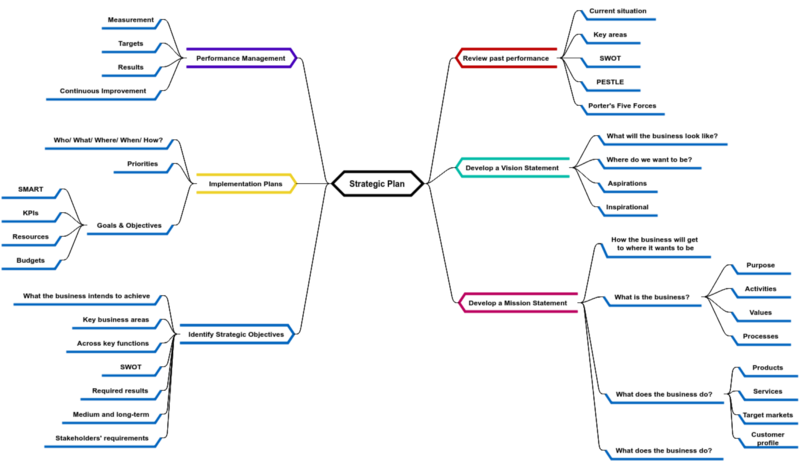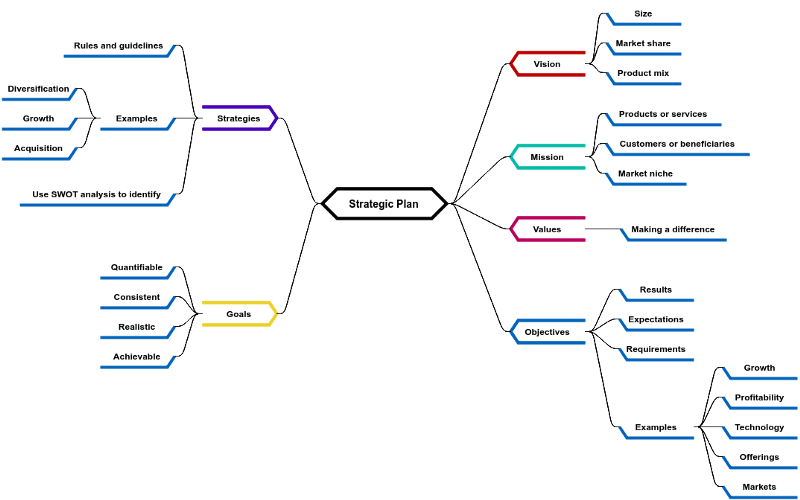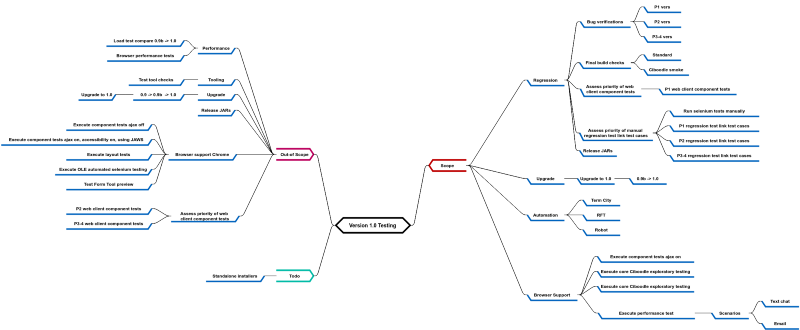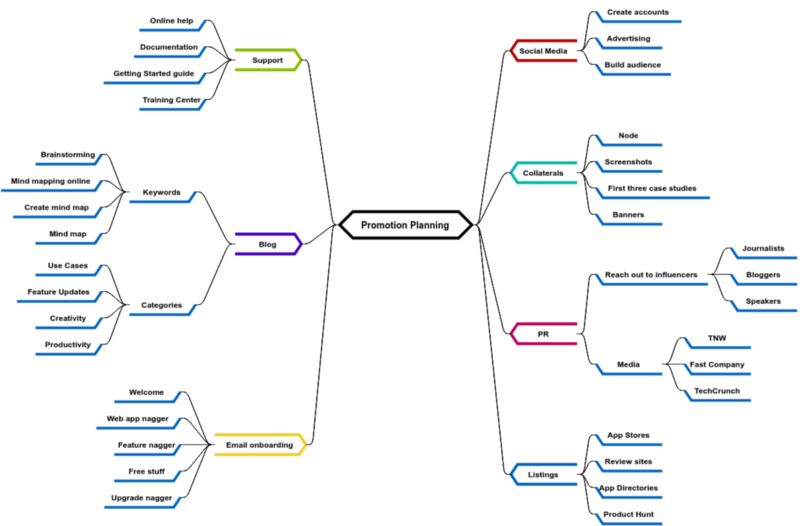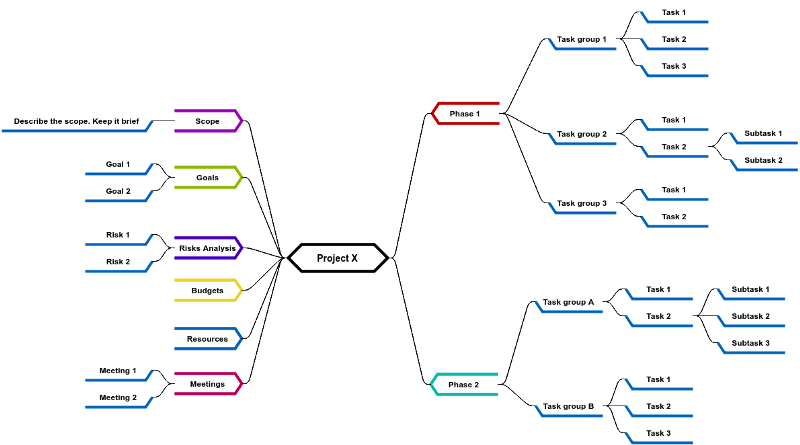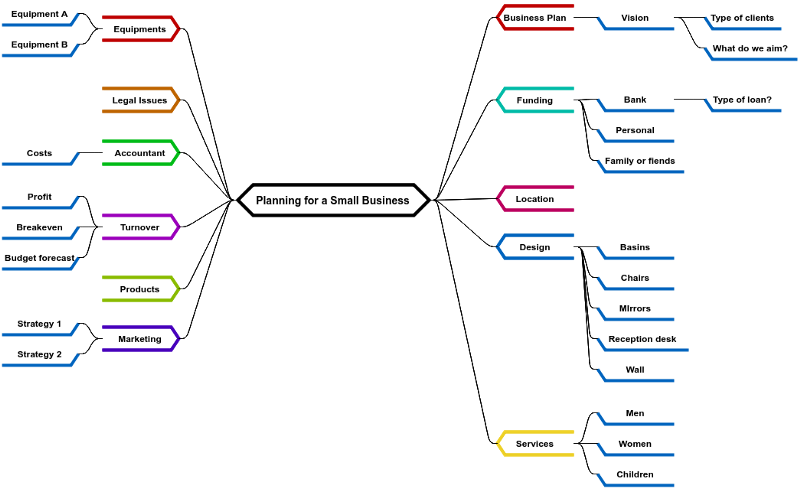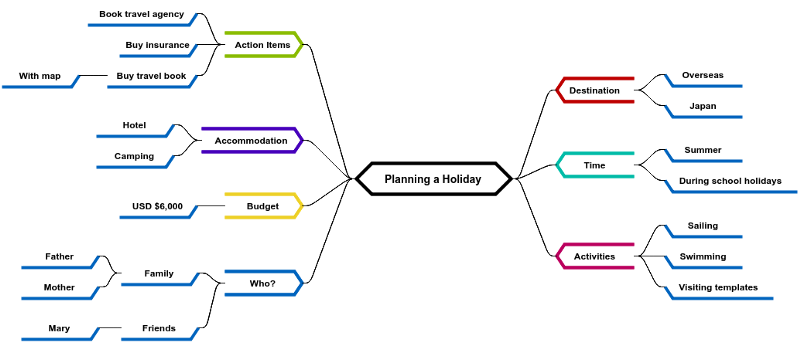Mind Mapping is “the whole brain alternative instead of linear thinking”. It reaches out in all directions and catches thoughts from any angle. Mind Map can help you plan, communicate, be more creative, save time, solve problems, concentrate, organize, remember better, study faster.
Mind mapping is an effective means to take notes and brainstorm essay topics. A mind map involves writing down a central theme and thinking of new and related ideas which radiate out from the center. By focusing on key ideas written down in your own words and looking for connections between them, you can map knowledge in a way that will help you to better understand and retain information.
Nowadays, mind maps are widely recognized as an effective method to improve your understanding and memory through the visual representation of information. Mind maps have many, including note taking, brainstorming, summarizing, organizing, problem solving, writing, revising, studying, and general clarifying of thoughts.
Characteristics of mind maps
Mind mapping is a highly effective way of getting information in and out of your brain which is a creative and logical means of note make that literally “maps out” your ideas.
Five essential characteristics of Mind Mapping:
- The main idea subject of focus in a central image
- The branches comprise a key word
- Topics of lesser importance are represented as “twigs”
- The branches form a connected model structure
Mind mapping converts a long list of information into a colorful, memorable and highly organized diagram that works in line with your brains natural why of doing things.
How to Use Mind Mapping?
- taking notes in a lecture and listening for the most important points or keywords
- showing links and relationships between the main ideas in your subject
- brainstorming all the things you already know about an essay question
- planning the early stages of an essay by visualizing all the aspects of the question
- organising your ideas and information by making it accessible on a single page
- stimulating creative thinking and creative solutions to problems
- reviewing learning in preparation for a test or examination.
Mind Map can be used for many, many different purposes. It is widely applied in stimulating and structuring ideas generated. This is a mind map diagram that answers the question “What is Mind Mapping” by listing out some of the common usages of mind map. Take a look at this mind map example to learn more about mind map, and start creating your own mind map with our mind map software. In fact, you can even use a mind map to explain “what is mind mapping?” as shown in the following example:
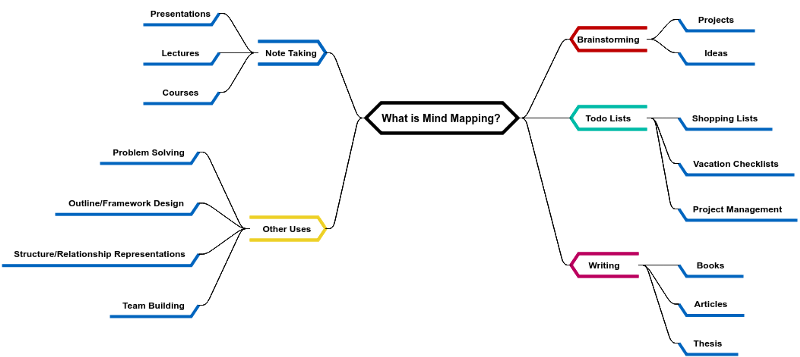
(Click to Open the example above)
Mind Mapping Software Tool
Visual Paradigm Online enable the entire mind mapping process to a whole new level. Now, you are able to record everything electronically and easily edit, update, reorganize, and share the Mind Map with our team, manager, client, or anyone else we would like to communicate progress to. Branches can be added, moved, and edited with the click of a mouse. Ideas can be captured visually, including electronic drawings or icons, and the ability to minimize branches gives us room to synthesize huge amounts of information into one Mind Map.
Try it Yourself with 30+ Mind Map Examples
- Free Mind Map Diagram examples and templates editable in an online Mind Map Diagram software: Visual Paradigm Online.
- Use the templates as a starting point to create your own Mind Map Diagram.
